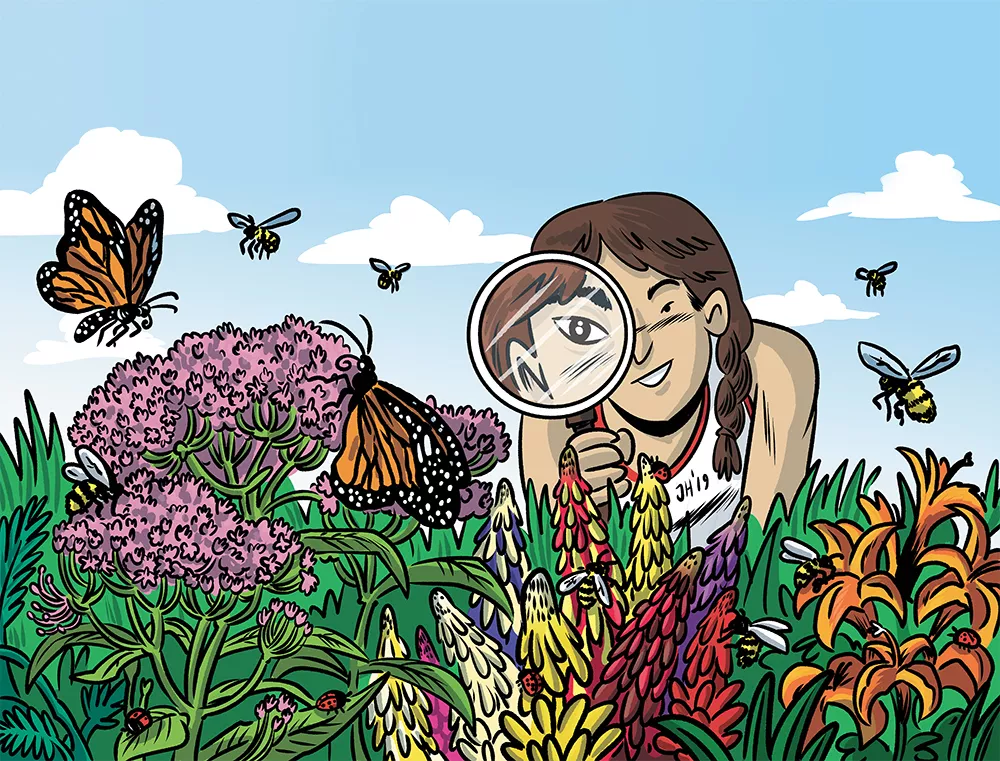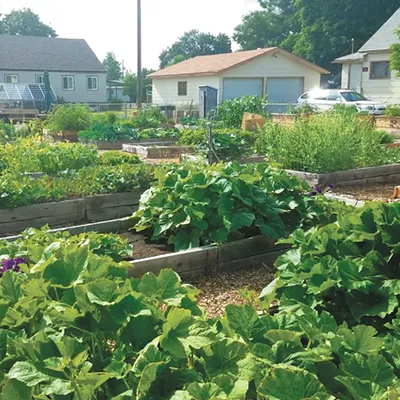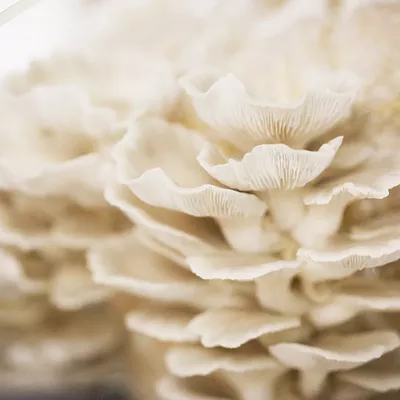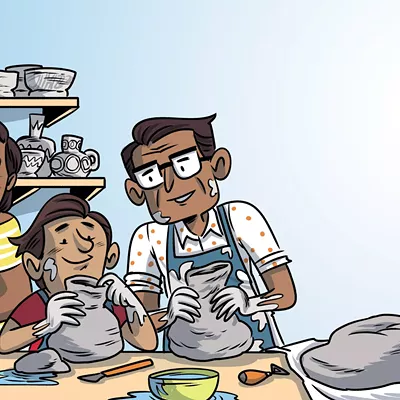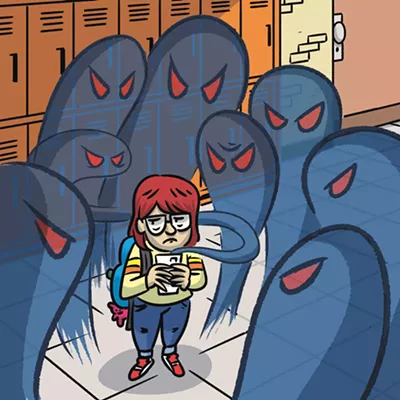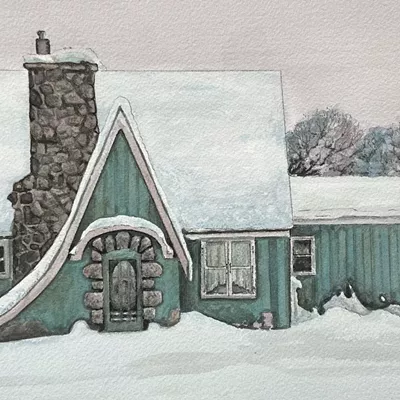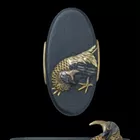Fine, green blades, mowed straight and even. No weeds, bare patches or scattered leaves — just lush grass from sidewalk to stoop, picket fence to picket fence. Long established as a middle-class aspiration, the perfect lawn is also hostile territory.
To a bee or butterfly, a flawless yard offers no food to eat. It provides no shelter for nesting or avoiding predators. Pesticides may linger. A perfect lawn serves as a desert, fragmenting natural habitat.
Spokane resident John Baumann, who serves as vice president of the Washington Butterfly Association, says he spent his youth chasing myriad butterflies through suburban backyards. But they have become much harder to find.
"That kind of experience is barely possible anymore," he says. "They will not find as many butterflies and they will not find the diversity."
An April study published in Biological Conservation estimated 40 percent of insect species face an imminent risk of extinction, citing widespread tilling of habitat into farmland, increased pesticide usage, invasive species and climate change. Other recent studies have estimated a 90 percent decline in monarch butterflies and an 87 percent drop in bumblebee populations.
Researchers have warned of an accelerating "insect apocalypse" that threatens crop pollinators and global food chains. Losing bugs dominoes through ecosystems to starve off birds, fish and reptiles. Insects also process waste for decomposition.
"We tend to think insects are of no consequence," Baumann says, "but ecosystem services are a big deal. ... There are a lot of misconceptions."
Local experts say homeowners can take several steps to make yards friendlier to beneficial insects and help rebuild a patchwork of natural habitat. With or without a nice lawn, experts recommend cultivating native plants, reducing and targeting the use of pesticides and providing some nesting cover.
Brenda Erhardt, a resource conservation planner with the Latah Soil and Water Conservation District, works primarily on restoring prairie and wetland habitat in North Idaho. She champions the reintroduction of native plant species to help rebuild nesting and pollination networks.
"We have lost a lot of our habitat connections," she says. "Anything we can do to bridge those gaps is really, really important."
Erhardt explains regional insects have evolved alongside native plants, adapting to them as sources of food and shelter. Monarch caterpillars, which turn into the widely recognized brilliant orange butterflies, eat only milkweed and have seen their numbers decimated by increased use of weed killers.
As housing developments and farms push into new areas, insects increasingly become isolated or have to cross large swathes of pavement, lawn or nonnative cropland that provide little sanctuary.
A private yard with native or insect-friendly plants serves as an oasis. Put a lot of them together and your can create new pathways for bugs to rebound.
"Planting a few native plants really helps," Erhardt says. "It does not matter how small your piece of land is."
Several regional nurseries now specialize in providing native plants and seeds. Erhardt recommends Clearwater Seed in Spokane and Thorn Creek Native Seed Farm in Genesee, Idaho. The Xerces Society offers many resources on protecting backyard pollinators as well as regional guides to native plant species.
A combination of native plants that bloom at overlapping intervals throughout the year helps to provide consistent food.
Experts also suggested letting some fallen leaves remain as ground cover for bugs like moths, beetles and spiders over the winter. Crafty tutorials can also be found online for constructing pollinator houses or "bee hotels" that create decorative nesting spaces for native insects.
Associate professor Gary Chang, an entomologist at Gonzaga University, notes that while honeybees and monarch butterflies get most of the attention, a wide variety of insects now faces environmental threats.
"There are a lot of big picture reasons for why people should care," he says. "Insects are a good indicator of environmental health. It can be a sign of other issues that are going on."
Many insects suffer from overly aggressive use of pesticides. Chang explains some people may mix up helpful and harmful insects such as bees versus yellowjackets. Proper identification allows homeowners to decide whether a more targeted trap or pesticide would work better.
"You can decide if you need to control them or not," he says. "There are some options that are more specific."
While he still encounters a lot of pushback, Baumann says people increasingly understand that modern conservation means more than saving the whales. Insects also face urgent risks. The effort to carve out space for their recovery can start at home by recognizing their needs.
So don't mind the weeds, he says. Embrace wildflowers and the leftover leaves. Who needs a perfect lawn when they could be out chasing butterflies?
"Our area does have a lot to offer," he says. "It's great how people's eyes light up."

